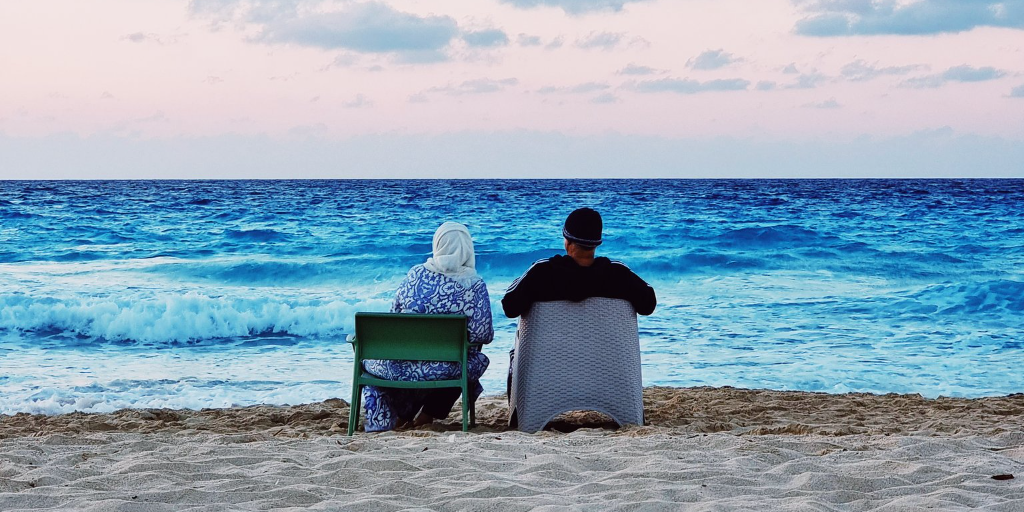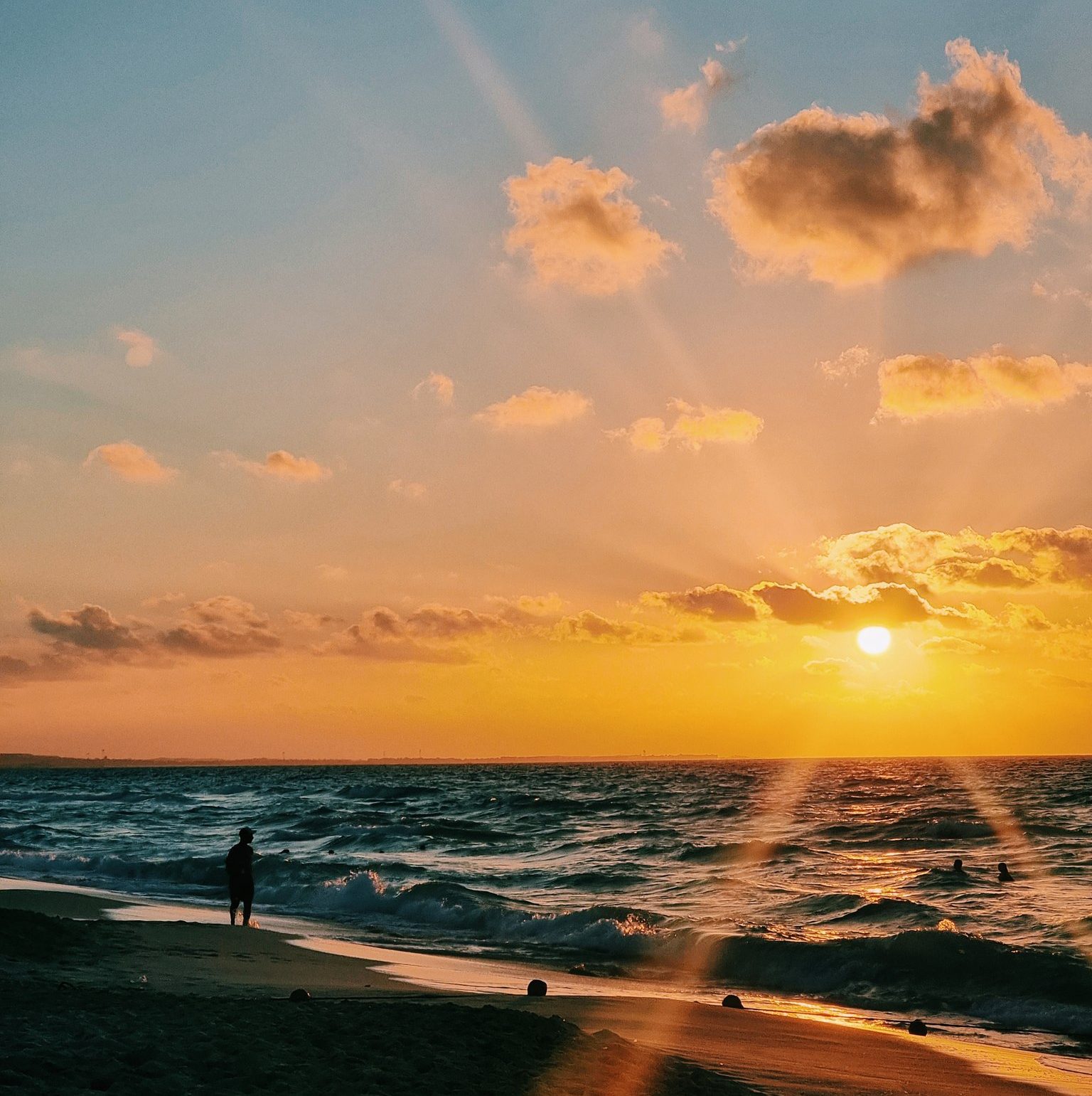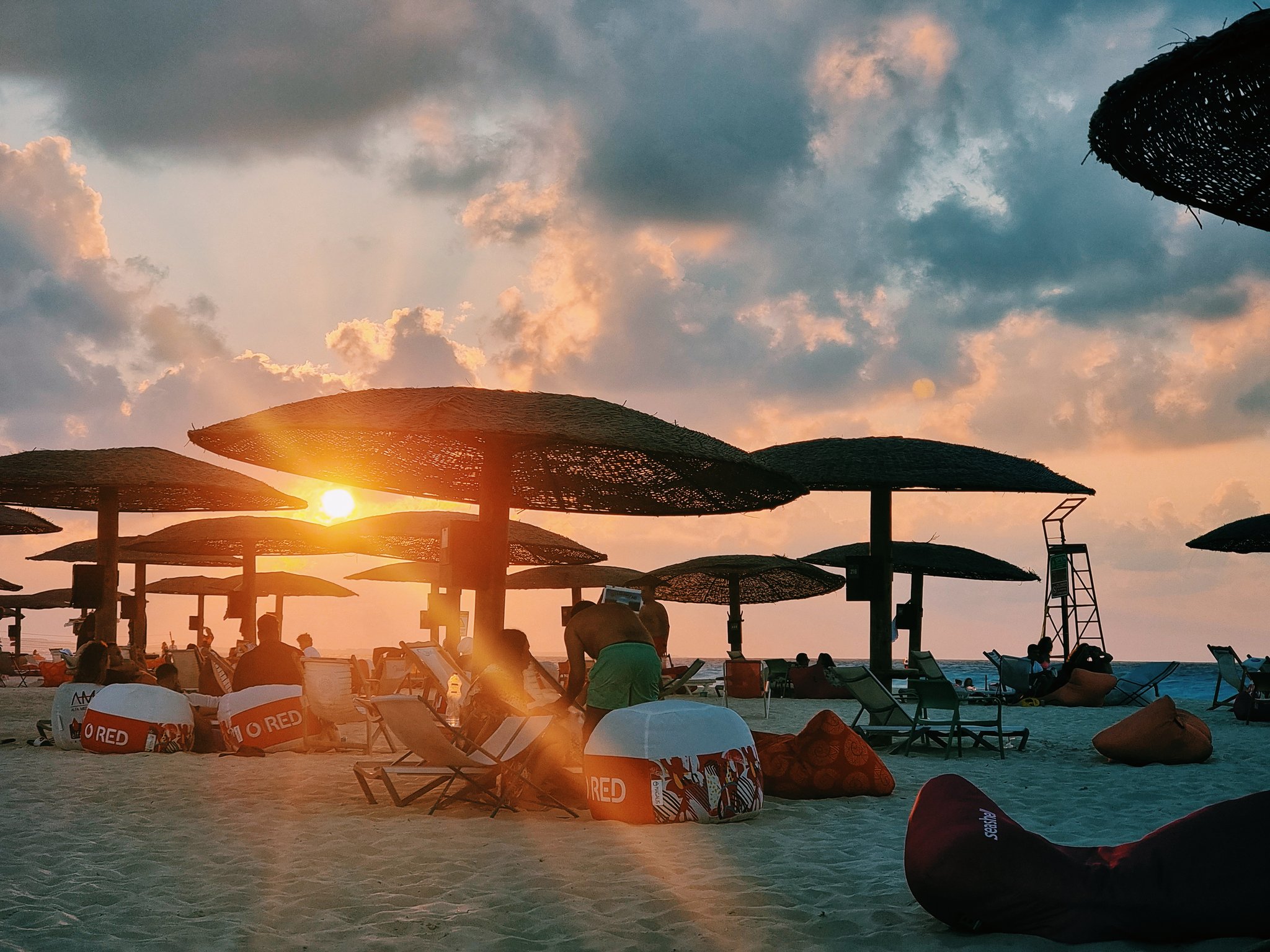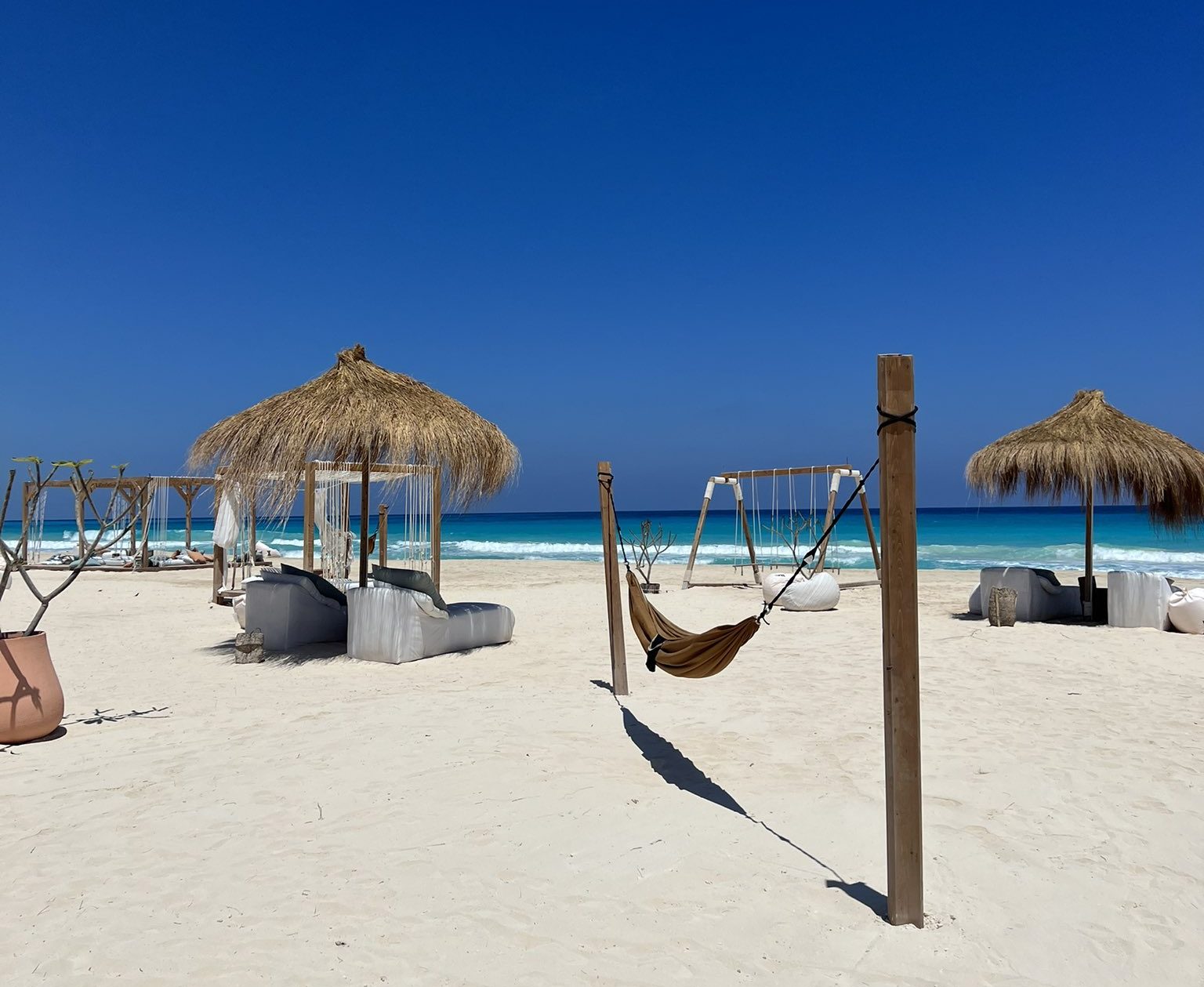Good vs. Evil: Are There Two North Coasts in Egypt?

To many Egyptians, summer means sahel. But what exactly does sahel mean?
Scattered on Egypt’s northern coastline, the resorts and compounds that lie between the cities of Alexandria and Marsa Matrouh are referred to as sahel (Arabic for coast), and for the past three decades, they have provided the perfect seaside respite for thousands upon thousands of Egypt’s middle and high income families.
Until recently, sahel could be summed up as the following: a place to let one’s hair down, swim, play games, eat simple food, and make up for any family time lost to the pace of city life. But this definition has begun to change. Or rather, a new face of sahel has emerged, creating along with it a new definition that now coexists, perhaps a little awkwardly, with the old one.
Newer, trendier developments began to appear about halfway between Marsa Matrouh and Alexandria, and they came with a different identity, aesthetic, price point, and target audience. And while both sahels are bursting at the seams during the summertime, some began to feel as though this new side was diluting its real meaning of sahel.
The subtle tension between the two worlds of sahel became more tangible in the summer of 2020, when a series of internet memes coined terms to distinguish these two worlds: ‘el sahel el tayeb’ (‘good sahel’), and ‘el sahel el sherrir’ (‘evil sahel’). Though it is difficult to trace back the origins of the joke, or identify who first made it, the terminology spread like wildfire on social media, and has by now become a common phrase understood by the majority of the people who frequent Egypt’s north coast.
While it is clear that ‘el sahel el tayeb’ refers to the traditional sahel and ‘el sahel el sherrir’ refers to the newer, trendier side of it, we asked the readers of Egyptian Streets if they can tell us what distinguishes the two in their opinion.
Here is what they said:
Where you are

One of the rough rules of thumb sahel-goers have developed to distinguish ‘good sahel’ from ‘evil sahel’ is the location. When asked, most of our readers identified Marina, a once massively popular compound about 150 kilometers west of Alexandria, as the last point of ‘good sahel’. Everything further west was more likely to be considered ‘evil’.
In the past, Marina itself was the closest thing to what is now considered ‘evil’ as it was the ultimate hotspot for parties and social gatherings. However with time, its trendiness faded, and it became a no-man’s land that neither fully belongs to ‘good sahel’ nor to ‘evil sahel’. Public policy student Zeineldin Elkhabiry tells Egyptian Streets that, in his view, Marina acts as a “buffer” between the two.
“Once you finish Marina, it’s sherrir. Marina is the Black Gates,” adds PeaceCake co-Founder Marwan Imam, making a reference to The Lord of the Rings.
How you get in
Location may be an indicator, but it is not always an entirely reliable one, as there are pockets of what is considered ‘good sahel’ hidden beyond Marina, in addition to the few dozen kilometers of coastline before Marsa Matrouh that are not home to new and trendy developments.
What several readers did identify, however, is that compounds lumped into the ‘evil sahel’ category tend to be far more gatekept – and they meant that quite literally. The gates of the resorts and compounds that are considered ‘evil’ have far tighter security and more demanding entry requirements.
Yomna Elshobaky, who works as an account manager at a tech company tells Egyptian Streets that to enjoy ‘evil sahel’, there is a need to “drive miles and miles to enjoy a small spot on the beach after getting codes to enter and making reservations everywhere to secure a spot.”
This does not apply in so-called ‘good sahel’, where telling the security guards at the gates the number of the chalet you’re heading to is usually more than enough to get you inside.
What you do and how much it costs you
Though Twitter and Facebook gave space for more nuanced answers, readers on Instagram gave a nearly unanimous response on the key difference between the two sahels: the cost.
While owning or renting a chalet or apartment is only accessible to middle and high income families regardless what part of sahel you are in, the ranges vary dramatically, as does the cost of everything you do while you are there.
Restaurant and coffee house chains that are popular in Cairo are present in parts of ‘evil sahel’, but to their prices, the so-called sahel-tax is added: the price of the same drink from the same chain can vary differently from Cairo to sahel. Even the simple foods and activities associated with the old-school ‘good sahel’ are more expensive if they are found in the newer sahel. For instance if it costs you EGP 30 to buy feteer (a quintessentially Egyptian filled pastry) in ‘good sahel’, it could easily cost you three or four times that amount on the other side.
In a few parts of new sahel, the beaches themselves require an entry fee, something that does not exist in any part of old-school sahel. One of the most popular compounds has even built a yacht marina lined with high end restaurants and brand name shops.
University administrator Heba Mohamed tells Egyptian Streets that this also applies to children’s activities. Sahel has long since been the highlight of children’s years, and while traditionally this has always been due to the simple activities made available to them by the beach, there are now far more complex and pricy activities according to Mohamed, and she says that it has become more difficult for parents to provide their children with an enjoyable experience.
Comparing the cost of the same good or service in the two sahels does not fully capture the difference in cost alone, as many of our readers alluded to. Even were the feteer and the round at the billiards table priced identically, spending time in ‘evil sahel’ is far more reliant on consumption.
There is simply far more to attend, eat, drink, and buy there. While in a old-school sahel compound, as reader Lina Gado tells us, you may find a feteer and zalabya vendor, a cafeteria with a few games, a bike rental spot, and a small supermarket, a compound in the trendier sahel has multiple party venues, coffee shops, eateries, and home decor shops – even high end jewelers, clothing, and cosmetics shops.
Not long before the summer, the TikTok account BubbleBurst, students at the American University in Cairo asked other students how much they spend in a day in Sahel. The lowest number mentioned was EGP 1000 (50 USD), while the highest was over EGP 10000 (USD 500).
“I pay in dollars,” says one student in the video. In old-school sahel, a vacationer would be hard put to find anything to spend more than EGP 100 (USD 5) on.
@bubbleburst_ Our 5th Episode Is Now Up! #viral #fypシ #egypt #foryoupage #fyp ♬ She Share Story (for Vlog) – 山口夕依
What you wear
A beachside vacation needs the right swimwear, and that is another point of difference readers mentioned. Alia Soliman, who works in gender and development, tells Egyptian Streets that in evil sahel, you will only very rarely find hijab-friendly swimsuits, often referred to as burkinis. Often, women wearing such swimwear will receive funny looks from their fellow vacationers.

On the other hand, Soliman says that it is also very likely for a woman in a bikini to feel uncomfortable at a pool or beach in ‘good sahel’ as she will likely not be surrounded by others wearing the same style.
Dress code differences are not exclusively related to swimwear either. There appeared to be a general consensus amongst readers that the degree of effort put into outfit choices is another significant. While in old-school sahel people tend to wear what is comfortable and easy, many said that they feel pressured to dress in fancier, more coordinated and thoughtfully put-together outfits. And outfit repeaters are heavily discouraged.
“If you’re in a place where girls have a different slipper [for every] outfit, you’ve gone too far,” jokes computer engineer Rania Tarek.
Where you stand among peers
If there are so many complaints about the so-called ‘evil sahel‘, why then is it that it is still packed with people every single weekend from June until August? One of the most common themes named by our readers was that this was the result of peer pressure.
Art history student Hagar Adam noted the element of social media. In the summer, the social media accounts of thousands of Egyptians are flooded with photographs and stories of them enjoying the most extravagant activities and parties in sahel, and it has begun to be seen as a sort of rite of passage. Something to be ‘in’ on.
Additionally, the ability to get into some of these locations has come to serve as a status symbol to many, and some find themselves feeling that asserting oneself as a member of this crowd is also a tool to prove oneself socially.
Computer engineer Rofayda Karam argues that the newer sahel is a symptom of a growing tendency among Egyptians to focus on appearances. Showing peers that one is able to afford a certain lifestyle, a certain car, certain clothes, is one of the reasons this version of sahel is as popular as it is today.
“When people have a twang in their Arabic and the children speak English.” says Ali Khaled, alluding to a tendency among some Egyptians to communicate with their children in English to appear well-off.
What you make of it
While Laila Fouad, who works in finance and economics, believes that the newer developments in sahel are built with poor use of the space and land they are in, she does not really buy into the tension between the two sahels.
“Does someone want to be seen drinking their avocado super-smoothie by the beach in the morning and eating sushi at night, with access to a million types of [outings] where [they] will run into people they know,” asks Fouad. “Or do [they] want to just chill and go to the beach?”

“I feel like you can do either wherever you are so this poses the question of why is this ‘beef’ there to begin with, or why is it a dichotomy of evil [or good] per se.”
Professor of journalism at the American University in Cairo, Nadine El Sayed and Egyptian Streets’ own Farah Rafik agree with Fouad, and generally argue that the peer pressure does not impose itself as many seem to argue that it does.
“You want to party all night and wear make up to the beach and call it el sahel el sherrir pressure, that’s on you,” El Sayed says. “I mean you can be wherever you are on the coast and have the sherir or tayeb experience; nobody is forcing anybody to sleep in or wear lipstick.”
Rafik echoes this by saying that while in terms of location she usually finds herself in what is considered el sahel el sherrir, but she is always living the tayeb life.
“[It’s] not about the location for me, its about what I can make out of it,” Rafik says. “So long as I am able to have good feteer, a place to swim, and a house to chill in, I’m good!”
There are also other readers who were not afraid to admit that they enjoy both kinds of sahel and that it simply depends on one’s mood. While sometimes what a vacationer is looking for is a relaxed, quiet, and inexpensive getaway from the social expectations of the city, the same vacationer might occasionally enjoy a more high-end gathering with friends, only with the added element of Egypt’s incomparable Mediterranean beaches.
Subscribe to the Egyptian Streets’ weekly newsletter! Catch up on the latest news, arts & culture headlines, exclusive features and more stories that matter, delivered straight to your inbox by clicking here.
Subscribe to our newsletter